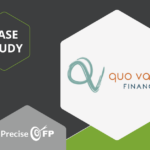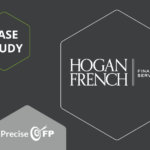The life of a financial advisor is undoubtedly challenging, juggling multiple responsibilities and wearing various hats with high stakes involved. Missing an appointment, failing to complete a trade, cut a check, or return paperwork can leave a sour taste in clients’ mouths. With limited staff and the need to scale and accommodate more clients, automation emerges as a vital solution. Today’s financial advisors have a multitude of tasks to tackle, including client meetings, client acquisition, administrative duties, investment management, and professional development. However, these responsibilities often leave minimal time for client-facing activities. Surveys reveal that a staggering 50 percent of a wealth management firm’s time is consumed by client-related tasks, leaving less than 20 percent for actual client meetings.
The scarcity of time to fulfill daily responsibilities has become a harsh reality for many financial advisors. The key to enhancing productivity and maximizing return on investment lies in embracing automation and leveraging digital tools that can effectively handle tasks prone to devouring valuable advisor time. In this article, we will explore the transformative potential of automation, empowering financial advisors to reclaim their time and redirect their focus toward cultivating meaningful client relationships and achieving long-term success.
Improve Productivity with Automation
New technologies and digitization have accelerated and expanded in the last 5 years, and these benefits have arrived in force in the wealth management industry. Automation enables advisors to streamline processes, improve communication, and gain deeper insight into the financial market and their client profiles. Arguably, the biggest opportunity is time.
Tools such as AI, machine learning, and big data automate administrative tasks, such as data entry, freeing up advisors’ time for client-related responsibilities or revenue-increasing activities.
Even though the possibilities for automation are virtually endless, firms need to think strategically about where they invest to maximize return, reduce the burden on their budget, and deliver the most value to customers and advisors. Here are five areas where wealth management firms can increase automation.
Client Data Collection
A key part of financial planning is data collection and entry: a long, tedious, and error-prone task. Software programs such as AutoEntry and Precise FP aggregate client data into customizable formats, almost eliminating the need for a human touch. These reports provide valuable insight into clients’ behavior, financial preferences, and the market, and are far more accurate than manual data entry. Automated data collection and entry enables the advisor to act on data rather than input it.
Compliance
Wealth management firms continue to experience increasing levels of complexity and rigor in compliance and regulation. As governments globally continue to change and increase regulation, firms can no longer take a piecemeal approach and need a holistic solution that allows them to gather evidence and complete reporting for many different regulations at one time. When these advisors or clerical staff perform these activities, there is a high degree of variability and quality in their work. Executing repetitive tasks and keeping up with new requirements is a natural fit for AI and ML platforms. Many firms are investing here to streamline processes and mitigate risk from regulators.
Client Segmentation
Elite wealth management firms have long realized the benefits of client segmentation. Today’s investors are interested in products hyper-personalized to their interests, risk tolerance, and individual client profile. Firms with systems in place to create these segmentations with ML and AI technology can offer value-added services that are a cut above the competition without sacrificing advisors’ time. A well-designed CRM system improves segmentation strategy and automates tasks such as tracking lead behavior, monitoring customer satisfaction scores, and calculating customer lifetime values.
Risk Profiling
While 70 percent of wealth management firms use risk profiling tools, this is one area where firms should balance automation with human input. Tools can gather client information, analyze the current financial market, and present calculations, but an advisor should review the results and determine accuracy. A clear picture of risk tolerance presented alongside sound, professional investment advice is possible with assessment tools and an advisor’s institutional knowledge.
Advisors spend less time calculating and re-calculating risks with the help of risk assessment tools. These solutions handle much of the manual work, enabling advisors to make a quick, informed decision based on the clear-cut numbers produced by the software.
Rebalancing
Rebalancing is arguably one of the most important tasks performed by financial advisors as it touches every part of a client’s portfolio. This is a lengthy and repetitive task without the use of technology. Automated rebalancing solutions ensure a client’s specified asset allocation stays within an acceptable range by executing the appropriate buy and sells to get the desired percentage. Additionally, it automates difficult tasks such as tax management, trade-offs, asset class customization, and substitutions. Human intervention is only required if bad data or unknown securities are detected.
With the emergence of new rebalancing software, one study by Michael Kitces found that an experienced advisor who averages 96 clients only spends 2.9 hours every year investment managing a client’s portfolio, a true testament to the efficiency and capabilities of this type of software.
Increase ROI by Saving Time
Time is a precious commodity for financial advisors. When time is properly invested and managed, client satisfaction improves, and ROI increases. Advisors who recognize and eliminate time-wasters, leverage modern technology, and automate where possible are those who can spend more time on the ever more-important client-facing tasks.







